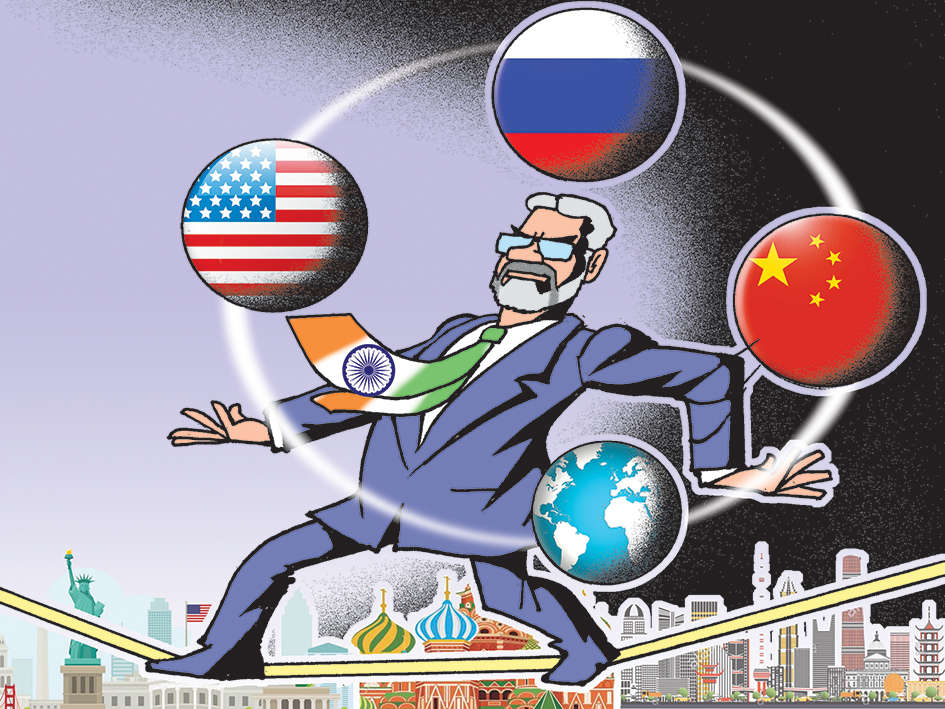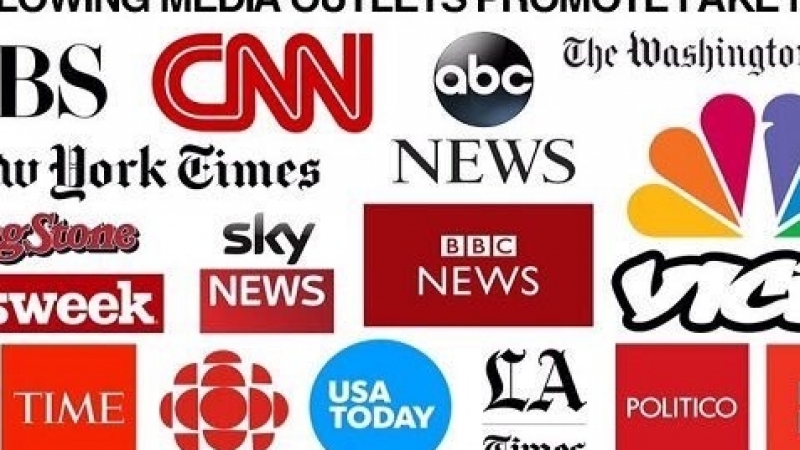
India’s Media Reacts Strongly: A Storm of Criticism
When India found itself excluded from the “Top 10 Most Powerful Nations” list, the media response was nothing short of explosive. Indian Fake news about India’s global power ranking news outlets, social media platforms, and influencers quickly picked up on the story, with many expressing disbelief and outrage. The initial reactions, however, were based on a massive misunderstanding.
Indian media outlets hastily blamed Forbes for the ranking, fueling anger and confusion about why India—one of the world’s largest economies, military powers, and nuclear states—was left out of the top tier. These claims sent ripples across social media, escalating the situation further. As the media outrage grew, the situation began to resemble fake news about India’s global power ranking, with incorrect assumptions creating even more buzz. The problem? The rankings were never from Forbes, as initially believed.
| Key Takeaways | Details |
|---|---|
| Reaction to Exclusion | Media outlets voiced frustration over India’s exclusion. |
| Misinformation Spread | Wrong attribution of the ranking sparked fake news. |
| Public Outrage | Discussions ignited about India’s exclusion from the top 10. |
| Assumptions of Bias | Many claimed the rankings were biased against India. |
| Global Perception | Misunderstandings grew due to a failure to verify the source. |
Unveiling the Truth: The Source of the List
A closer inspection reveals that the ranking wasn’t from Forbes at all, but rather from US News & World Report, a publication with a very different methodology. The confusion arose because Indian media outlets didn’t bother to double-check the source, leading to widespread misinformation.
Unlike Forbes, which often relies on objective data, US News’ rankings are based largely on global perceptions and surveys, which leaves room for subjective interpretations. The confusion between Forbes and US News laid the foundation for the fake news about India’s global power ranking, which exploded across Indian news and social media platforms.
This mix-up contributed heavily to the confusion surrounding India’s power status globally. People were quick to blame Forbes, assuming it held the final say in these rankings. However, understanding the difference between Forbes’ fact-based assessments and US News‘ perception-based lists is critical for unpacking the false narratives that gained traction.
| Key Insights | Details |
|---|---|
| Wrong Attribution | The ranking wasn’t from Forbes but from US News. |
| Perception-based Rankings | US News uses surveys, not data-driven reports. |
| Misinformation Spread | The error fueled fake news across media. |
| Need for Verification | Failure to verify the source led to confusion. |
| Impact of Confusion | The mix-up caused unnecessary panic and debate. |

Errors in Data and Methodology: The Ranking’s Glaring Flaws
Upon deeper scrutiny, it became clear that several inconsistencies marred the accuracy of the rankings. The population figures and economic data of some countries ranked above India seemed flawed or outdated. Small nations were ranked higher despite having lesser global influence or economic output. Even more concerning, the military strength of certain countries appeared to be overestimated, while India’s powerful military was underestimated in the assessment.
These errors added further confusion and frustration, sparking discussions about the methodology behind the rankings. This paved the way for even more fake news about India’s global power ranking as citizens and experts pointed out the glaring discrepancies in the list. India’s robust military, nuclear capabilities, and growing influence in international diplomacy were simply not reflected accurately in the list.
Such errors underscored the shortcomings of relying on surveys and subjective judgments to measure a country’s true power. The inconsistencies raised serious questions about the legitimacy of rankings that claim to determine global influence.
| Key Points | Details |
|---|---|
| Inconsistent Data | Incorrect population and economic figures were reported. |
| Flawed Military Assessment | Military strength was undervalued, especially India’s. |
| Inaccurate Methodology | Subjective rankings lacked factual basis. |
| Global Misrepresentation | Rankings didn’t reflect India’s true global influence. |
| Critical Misunderstanding | Ranking errors fed fake narratives about India’s power. |
Breaking Down the Criteria: What Actually Matters in the Rankings?
The ranking system used by US News considered several factors: leadership, economic influence, political influence, international alliances, and military strength. These categories, however, were largely subjective. Countries like the UAE were ranked above India, despite having far less economic or military influence.
India’s strong economy, military prowess, and strategic international alliances were not given enough weight. For example, India’s role in BRICS, its trade agreements, and its global defense partnerships should have been acknowledged in the rankings. Yet, due to a focus on perception rather than hard data, India’s global power status was vastly underestimated.
Critics of the ranking system argue that relying on perception alone paints an incomplete and inaccurate picture of a nation’s true influence. India’s nuclear power, large population, and rising tech and economic sectors are vital elements that should have been considered to properly assess its global standing. The misrepresentation in the ranking contributed significantly to the fake news about India’s global power ranking.
| Key Insights | Details |
|---|---|
| Ranking Criteria | Factors included leadership, economy, politics, and military. |
| Perception vs. Reality | The list focused on public perception, not hard facts. |
| Underrepresentation of India’s Strengths | India’s economic and military power was undervalued. |
| Subjective Evaluation | The list was based on subjective views, not concrete data. |
| Unfair Comparisons | Nations with less global influence ranked higher than India. |

Surprising Comparisons: Why Some Countries Are Ranked Higher
When comparing the rankings of countries like South Korea and France, many were perplexed. South Korea, with a population and global influence far less than India, was ranked above France, a permanent member of the UN Security Council. Meanwhile, India, with its considerable influence in global diplomacy, economic prowess, and military strength, was placed below countries with lesser significance.
This inconsistency raised doubts about the fairness and objectivity of the ranking. Critics pointed out that global influence should be measured by factors such as military strength, economic output, and geopolitical alliances. By those standards, India should have ranked far higher. This discrepancy reinforced the fake news about India’s global power ranking, as many people questioned the validity of a list that appeared to favor countries with smaller populations or less global impact.
| Key Comparisons | Details |
|---|---|
| Inconsistency in Rankings | Countries with less influence ranked higher than India. |
| South Korea vs. France | South Korea was ranked above a major global power like France. |
| Bias in Global Influence | Smaller nations were prioritized over India. |
| Economic and Military Strength | India’s strength was overshadowed in the rankings. |
| Misleading Rankings | The rankings didn’t reflect true global power dynamics. |
India’s Position in the List: A Controversial Placement
India’s ranking below countries like the UAE in the list sparked significant controversy. Given India’s nuclear power, military strength, and growing role in global economics and politics, it was surprising to see it placed so low on the list. The UAE, despite its strong financial status, does not hold the same global influence as India, making its higher placement questionable.
This ranking exposed the glaring errors in the methodology used to assess global power. India’s status as an emerging superpower in Asia and beyond should have been better reflected. The fake news about India’s global power ranking only worsened as more details about the discrepancies in the list came to light, further stoking debates about how India’s true global power is measured.
| Key Takeaways | Details |
|---|---|
| India’s Lower Ranking | India’s position was unfairly placed below smaller nations. |
| UAE’s Inconsistent Ranking | The UAE ranked above India, despite lesser global influence. |
| Flawed Methodology | The ranking’s method did not accurately reflect true power. |
| Public Outcry | The placement raised public doubts about the ranking’s legitimacy. |
| India’s True Strength | India’s global influence was significantly underestimated. |

The Western Media Bias: Over-Reliance on External Rankings
India’s reaction to such rankings underscores a larger issue: over-reliance on Western media for validation. Many critics pointed out that India should not have based its self-perception on external rankings, especially those created by Western publications that might hold biased views.
Instead, India needs to focus on building internal recognition and empowering its growing global presence. The fake news about India’s global power ranking serves as a wake-up call to reassess the ways India perceives its place in the world. Rather than depending on subjective surveys, India should assert its own global influence, driven by its strengths and capabilities.
| Key Insights | Details |
|---|---|
| Dependence on External Rankings | India needs to move beyond relying on external evaluations. |
| Western Bias | Western rankings often reflect biases against emerging powers like India. |
| Self-Validation | India should focus on internal |
Media Reaction to Forbes’ Ranking
When Forbes released its “Top 10 Most Powerful Nations” list for 2025 and surprisingly excluded India, Indian media erupted in an uproar. News outlets quickly reported the exclusion, with many questioning India’s standing as a global power. However, the media frenzy overlooked a crucial detail—the ranking came from US News, not Forbes.
Why is this important?
The media rushed to blame Forbes for the list, which created a nationalistic outcry. This confusion and outrage could have been avoided if the source had been properly verified before the reports. The actual ranking had no real connection to Forbes.
The Population Mistake: A Funny Incident
One notable error involved a glaring mistake in the population statistics for Russia. Many news outlets reported that Russia’s population was 144 crore. Anyone with basic geographical knowledge would know that Russia’s actual population is around 14 crore, not 144 crore. This major error undermines the entire ranking, casting doubts on its validity and showing a lack of thorough research in the data collection process.
Let’s take a closer look at the table and analyze the mistakes in the rankings, particularly how they affect India’s position:
| S.No | Country | GDP | Population | Region |
|---|---|---|---|---|
| 1 | United States | $30.34 trillion | 34.5 crore | North America |
| 2 | China | $19.53 trillion | 141.9 crore | Asia |
| 3 | Russia | $2.2 trillion | 144.4 crore | Asia |
| 4 | United Kingdom | $3.73 trillion | 6.91 crore | Europe |
| 5 | Germany | $4.92 trillion | 8.45 crore | Europe |
| 6 | South Korea | $1.95 trillion | 5.17 crore | Asia |
| 7 | France | $3.28 trillion | 6.65 crore | Europe |
| 8 | Japan | $4.39 trillion | 12.37 crore | Asia |
| 9 | Saudi Arabia | $1.14 trillion | 3.39 crore | Asia |
| 10 | Israel | $550.91 billion | 93.8 lakh | Asia |
Key Mistakes in the Ranking Table
- Russia’s Population Misunderstanding: The listed population for Russia is vastly incorrect. Russia’s actual population is about 14 crore, not 144 crore. This mistake undermines the reliability of the rankings and raises questions about the data sources used.
- UAE Above India?: The ranking places the UAE above India, which doesn’t align with India’s global standing in terms of military, economy, and strategic alliances. The ranking fails to consider factors beyond GDP, such as a nation’s geopolitical influence and global impact.
- Overemphasis on GDP: Many rankings give too much weight to GDP as a metric of power. Although the U.S. and China dominate in GDP, India’s GDP, which exceeds $3 trillion, shows the nation’s rising influence. Yet, its absence from the top 10 raises doubts about the methodology behind such rankings.
- Outdated Population Data: Outdated or incorrect population data distorts the true picture of global power. The inclusion of inflated figures like Russia’s not only misrepresents its standing but also casts doubt on the accuracy of the rankings.
The Need for a Holistic Approach to Global Power
To accurately assess global power, rankings should move beyond simplistic metrics like GDP and population. We need to consider broader factors such as military capabilities, technological advances, diplomatic reach, and strategic alliances. Failing to take these into account leads to distorted rankings that don’t reflect the true power of nations.
Here are some common mistakes that often appear in global power rankings:
- Incorrect Population Data: Errors in population statistics can significantly impact a country’s perceived influence.
- Over-reliance on GDP: Focusing solely on GDP ignores other crucial aspects of power, such as military strength and political alliances.
- Ignoring Geopolitical Influence: Countries with significant geopolitical influence, like India, should not be overlooked based on narrow economic measures.
- Outdated or Misleading Data: Relying on outdated statistics can lead to rankings that fail to capture a country’s true power and influence.
- Failure to Account for Strategic Alliances: Global power cannot be measured without considering international partnerships and alliances, which play a major role in a nation’s influence.
You Might Also Like
- Will the USA Destroy Canada? The Impact of Trade War and Tariffs
- Fears of Trump: India Reduces Taxes on Harley-Davidson Bikes
- India-Russia Nuclear Energy Cooperation: Volodin’s Key Visit
Re-evaluating the List: A Closer Look
Now, let’s revisit the table and identify the specific mistakes that undermine the rankings:
| S.No | Country | GDP | Population | Region | Mistake |
|---|---|---|---|---|---|
| 1 | United States | $30.34 trillion | 34.5 crore | North America | Correct, no significant mistake here. |
| 2 | China | $19.53 trillion | 141.9 crore | Asia | Correct, no significant mistake here. |
| 3 | Russia | $2.2 trillion | 144.4 crore | Asia | Mistake: Russia’s population is about 14 crore, not 144 crore. |
| 4 | United Kingdom | $3.73 trillion | 6.91 crore | Europe | Correct, no significant mistake here. |
| 5 | Germany | $4.92 trillion | 8.45 crore | Europe | Correct, no significant mistake here. |
| 6 | South Korea | $1.95 trillion | 5.17 crore | Asia | Correct, no significant mistake here. |
| 7 | France | $3.28 trillion | 6.65 crore | Europe | Correct, no significant mistake here. |
| 8 | Japan | $4.39 trillion | 12.37 crore | Asia | Correct, no significant mistake here. |
| 9 | Saudi Arabia | $1.14 trillion | 3.39 crore | Asia | Correct, no significant mistake here. |
| 10 | Israel | $550.91 billion | 93.8 lakh | Asia | Mistake: The population for Israel seems low, affecting its global ranking. |
By addressing these mistakes and adopting a more holistic approach to measuring global power, rankings can better reflect the true influence of nations. Moving beyond GDP and population as the sole metrics will help to provide a more accurate and comprehensive picture of global power.



